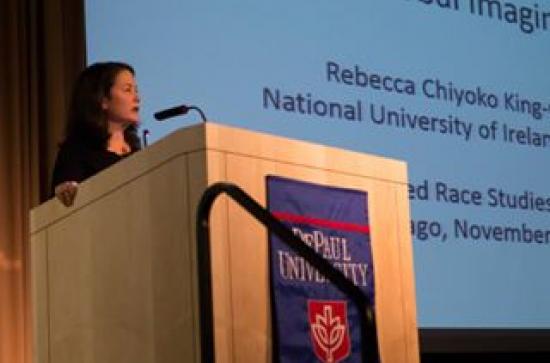Dr. Rebecca King O’Riain gives opening keynote addressPosted in Articles, Europe, Media Archive, Social Science, Videos on 2015-01-02 21:16Z by Steven |
Dr. Rebecca King O’Riain gives opening keynote address
Maynooth University
Maynooth University Department of Sociology
Maynooth, County Kildare, Ireland
2014-11-27
Dr. Rebecca King-O’Riain gave the opening keynote address on “mixed race, transconnectivity and the global imagination” at the critical mixed race studies conference on 13 November, 2014 at DePaul, University on Chicago, USA.
Her talk examined two key questions – ‘Is there such a thing as Global Mixed Race? If so, what is it, where did it come from and is it a good thing?’. Below is the abstract for her talk.
If race gains meaning through the process of racialization, this meaning only makes sense within very specific local contexts entwined with complex local histories, which in turn shape local political, economic and social arrangements. Mixed-race studies started primarily in the United States and has been deeply shaped by the politics of race in that context, with strong racial boundaries and the legacy of the ‘one drop rule’. How then do we make sense of mixed race as a global phenomenon across the globe without losing the specificity of local context from which it derives its meaning?
Drawing on our recent edited volume Global Mixed Race, I use empirical research from Kazakhstan, Okinawa, Zambia, Trinidad and Tobago, Australia, New Zealand, and Mexico, as well as the UK, Germany, and Canada, to ask what happens when we take mixed race on the road? Because as Mahtani (2014) keenly observes, it is not just about asking ‘what are you?’ but also about asking ‘where (in the world) are you?’…
Read the entire article here watch the keynote here. [MixedRaceStuides.org is mentioned from 00:35:41 to 00:36:07 in the video].



